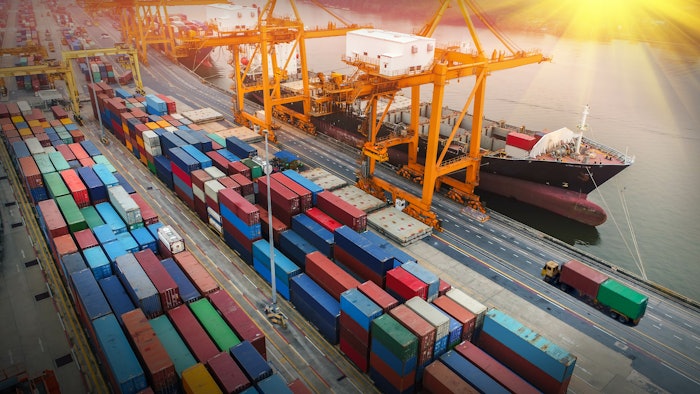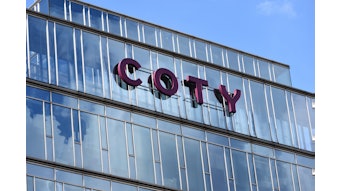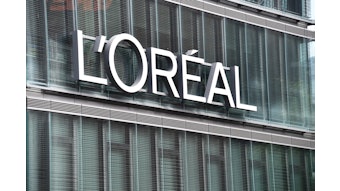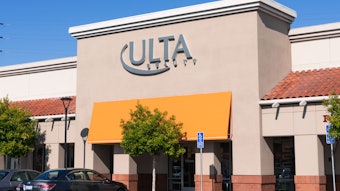
 Laura Horne, vice president of sales & marketing at FP Labs and Federal PackageFederal Packaging
Laura Horne, vice president of sales & marketing at FP Labs and Federal PackageFederal Packaging
Q&A with Laura Horne, vice president of sales & marketing at FP Labs and Federal Package
Global Cosmetic Industry: What are your customers telling you about tariffs? What questions are they asking you?
Horne: Customers have shared that they are evaluating their end-to-end supply chain, looking for ways to build in flexibility, the possibility of reshoring, and determining if it is possible to build in secondary manufacturing options. The question I have been asked most often is about substantial transformation and how it could impact the import or export of products.
Global Cosmetic Industry: Are brands reconsidering which international markets to enter or prioritize based on tariff landscapes?
Horne: There are multiple aspects of what drives a brand to re-evaluate its overall business model, including what international markets to operate in, and the current tariff landscape will definitely be one aspect that will influence this decision. Multiple brands that we work with have asked questions about bringing some aspect of their product lifecycle to the U.S. This includes sourcing more US raw materials, exploring where containers are sourced, and if there are other ways to cut costs that would allow for the tariffs to be offset.
Global Cosmetic Industry: Are tariff considerations influencing new product development, such as ingredient selection or formulation complexity?
Horne: Just recently, there has been a shift in more brands looking for ready-for-market OTC formulations. Not only does this allow for brands to launch faster, but it also reduces the complexity in their overall product development process. Additionally, there has been an increase in the number of requests for cosmetics products overall, and multiple requests for products with fewer or US-sourced ingredients.
Global Cosmetic Industry: What shifts are you making in manufacturing locations or strategies (e.g., nearshoring, reshoring, diversifying) in direct response to tariffs?
Horne: All of our manufacturing is done in Chanhassen, MN. While we do source multiple materials from outside the United States, our goal is to source here as much as possible. That being said, we are constantly evaluating where we can get the best costs and fastest delivery. Some of the necessary actions are bringing in extra raw materials to support future demand, working to negotiate with suppliers in advance of tariffs, and finding other areas of efficiency within our supply chain that can help to mitigate some of the tariff impact.
Global Cosmetic Industry: To conclude, what advice are you giving your clients amid uncertainty?
Horne: Ultimately, we will get through this and find new ways of doing business more efficiently.
Global Cosmetic Industry: How are tariffs influencing decisions related to packaging materials (e.g., glass, plastic, aluminum, paper)? Are brands seeking alternative materials or suppliers?
Horne: Brands are constantly innovating, having tariffs implemented won’t change that. In many ways, where there are constraints, there will be innovation to find new ways of doing business. We are always looking at new packaging options, new or different raw materials, and new innovations in how to operate. While tariffs will change how we look at and operate in the global marketplace, they won’t stop the innovation that comes from it. Necessity breeds invention.
Q&A: Handling customer concerns, with Dan Wolfe of Cosmopak
Our friends at Cosmopak touch on the subject, reflecting on how consumers will continue to respond to these economic changes. Dan Wolfe, Cosmopak, says,  Dan Wolfe, senior vice president of business development, CosmopakCosmopak
Dan Wolfe, senior vice president of business development, CosmopakCosmopak
Wolfe adds, "The most common questions from customers include: shat markets are best suited for manufacturing or assembly while maintaining quality and lead times; how can we shift production in the most efficient manner; and what does a long-term tariff mitigation strategy look like without sacrificing speed to market, sustainability and innovation?"
He continues, "It’s not business as usual for Cosmopak or the industry, and the idea of 'I want 100% of my packaging made in Market X' is increasingly impractical. We don’t provide one-size-fits-all solutions—we use a tailored framework to guide our clients through this evolving landscape."
Wolfe continues, "This includes an evaluation of their existing products and supply chain, and a structured decision matrix process around key factors such as: product type, package and product complexity, decoration requirements, manufacture method and substrate, fill location, and order volume, forecast variability and program urgency."
Wolfe concludes, "At its core, the vendor client relationship has changed and has evolved past simply developing an item the client loves and manufacturing it. Now there are more variables in the equation, and the landscape is changing rapidly. Cosmopak is in the fortunate position to have a global supply chain that we’ve established over decades across all categories in our portfolio, from molded parts, bags and paper packaging."
 Samantha Burd, Co-Owner of LadyBurd Cosmetics
Samantha Burd, Co-Owner of LadyBurd Cosmetics
Q&A with Co-founder of LadyBurd Cosmetics, Samantha Burd
Global Cosmetic Industry: What are your customers telling you about tariffs? What questions are they asking you?
Burd: They mostly just want to know how it will impact their prices.
Global Cosmetic Industry: Are brands reconsidering which international markets to enter or prioritize based on tariff landscapes?
Burd: Not that I’ve heard of.
Global Cosmetic Industry: Are tariff considerations influencing new product development, such as ingredient selection or formulation complexity?
Burd: Yes, but from the packaging front—not the formulation front (yet).
Global Cosmetic Industry: What are the logistical challenges (e.g., shipping costs, customs delays) exacerbated by tariffs, and how are you mitigating them?
Burd: Obviously, anything that we import is going to go up in price, so we’ve been looking into sourcing things from India, South America, more locally where we can, etc.
Global Cosmetic Industry: What shifts are you making in manufacturing locations or strategies (e.g., nearshoring, reshoring, diversifying) in direct response to tariffs?
Burd: Continuing to manufacture in New York as always.
Global Cosmetic Industry: To conclude, what advice are you giving your clients amid uncertainty?
Burd: Buy now… it’s only going to get more expensive.
Global Cosmetic Industry: Are brands seeking alternative materials or suppliers?
Burd: We’re not seeing so much of a change in materials, but just looking for alternative suppliers.
Q&A with Jenifer Brady, vice president of sales & marketing at Brad-Pak Enterprises
 Jenifer Brady, V.P. Sales & Marketing, Brad-Pak Enterpises, Inc.Brad-Pak Enterprises, Inc.
Jenifer Brady, V.P. Sales & Marketing, Brad-Pak Enterpises, Inc.Brad-Pak Enterprises, Inc.
Jenifer Brady, vice president of sales and marketing at Brad-Pak Enterprises, tells us: "When the tariffs were announced, a lot of our customers called and asked us to temporarily put their orders on hold. They did ask if there were similar items they could buy locally meaning North America. They were also asking if we would participate in the tariff costs. During the couple weeks of uncertainty with the tariffs we were sourcing existing business in more tariff friendly countries. Very recently the tariffs were substantially lowered from China to 30% and will be held at this rate for 90 days. This news was a bright spot and some of our customers took their orders off hold and asked us immediately to ship."
Brady continues, "It is very stressful and uncertain times in the packaging world currently. Some customers are committed to moving their packaging components out of China and would very much like to source in North America and Europe, while others are just sitting tight and wish to continue to purchase out of China. Time will tell."
Brady concludes, "Brad-Pak Enterprises commitment moving forward is first pushing business with our North American partners and European partners while reminding the brands no one ever wants to be caught in tariff uncertainties anytime in the future."
 Sourabh Sharma, head of digital marketing, creative director and CEO at FIG or out
Sourabh Sharma, head of digital marketing, creative director and CEO at FIG or out
Q&A with Sourabh Sharma, head of digital marketing, creative director and CEO at FIG or out.
Global Cosmetic Industry: What are your customers telling you about tariffs? What questions are they asking you?
Sharma: Customers today are less concerned with the technicalities of tariffs and more with the direct impact, like, "Why is this product more expensive?” or “Why did shipping timelines increase?” Across our experiences with FIG or out and apparel, fragrance and beauty, I’ve observed a common theme: consumers expect consistency, even in a volatile macroeconomic environment. Meanwhile, our B2B partners often ask nuanced questions around duty classifications, labeling requirements, or how tariff hikes in specific regions could affect MOQs. The ask isn't always for a solution, but now more than ever it’s for transparency. What they value most is when we can distill complexity into clear operational plans, and ideally, preempt tariff-related surprises before they hit the shelf or the cart.
Global Cosmetic Industry: Are brands reconsidering which international markets to enter or prioritize based on tariff landscapes?
Sharma: Absolutely, and this reassessment is happening in real-time. Tariff volatility has become a new lens through which expansion is evaluated. For instance, when managing fragrance distribution across regions like the UAE, South Korea, and the EU, we’ve seen brands pause entry into markets where tariff unpredictability, compounded by slow customs clearances, could erode margin or delay launch calendars. Instead, brands are increasingly prioritizing geographies where trade agreements offer stability, or where free trade zones (like Dubai’s JAFZA or Korea’s customs-bonded areas) create an operational edge. It’s no longer just about demand, it’s about navigability and risk tolerance.
Global Cosmetic Industry: Are tariff considerations influencing new product development, such as ingredient selection or formulation complexity?
Sharma: Yes, and this is where creativity meets compliance. For beauty and fragrance products, formulation complexity can inadvertently trigger higher duties depending on country-specific regulations around ingredients or alcohol content. In one case in fragrances for example, we strategically reformulated SKUs to reduce the alcohol volume threshold, allowing for smoother entry into specific Asian markets with stringent import taxes on flammable goods, which had to then be adapted to the marketing strategy too. Simultaneously, packaging decisions, from glass weight to secondary material usage, are being made with shipping classifications in mind. Tariffs aren’t just a finance or legal concern anymore; they’re actively influencing product and packaging design from day one.
Global Cosmetic Industry: What are the logistical challenges (e.g., shipping costs, customs delays) exacerbated by tariffs, and how are you mitigating them?
Sharma: Tariffs tend to be the tip of the iceberg, is what I've had to tell clients and customers alike. What lies beneath are rising shipping premiums, unexpected customs inspections, and new documentation requirements. In fragrance especially, where goods often fall under “hazardous” categories, delays can compound due to country-specific interpretations of regulations. To mitigate, we’ve leaned into multi-warehouse strategies and staggered inventory fulfillment, both online and retail, to ensure uninterrupted distribution. Leveraging real-time data and logistics dashboards, we can route products dynamically to avoid congested ports or flagged zones. Ultimately, speed-to-market is not just about fast shipping; it’s about smart, anticipatory logistics.
Global Cosmetic Industry: What shifts are you making in manufacturing locations or strategies (e.g., nearshoring, reshoring, diversifying) in direct response to tariffs?
Sharma: One of the most forward-thinking shifts we’ve seen and implemented (particularly learning from slow fashion in apparel with Print All Over Me) is micro-manufacturing or small-batch production closer to the point of sale. In some cases, piloted partnerships in the U.S. and Europe are done to fulfill ecommerce or exclusive retail runs, reducing exposure to overseas tariffs and enabling agility. This decentralization doesn’t mean abandoning global suppliers; rather, it's about creating a tiered supply chain: one that balances cost-efficiency with local responsiveness. For fragrance and beauty, where trend cycles are fast and shelf presence matters, this hybrid model allows everyone to act nimbly without being overly reliant on any one geography.
Global Cosmetic Industry: To conclude, what advice are you giving your clients amid uncertainty?
Sharma: I tell clients this: build flexibility, not fear. In today’s trade climate, agility isn’t a strategy, it’s your marketing passport. Tariffs are just one of many geopolitical levers that can impact commerce, but those who succeed treat uncertainty as a design input, not an obstacle. That means embracing modular packaging that can adapt to regional labeling needs, building SKUs that can flex for regulatory variations, and using digital-first launches to test demand before committing to full-scale international rollouts. The brands that will win are those that not only respond to volatility, but are structurally ready for it. Ultimately, don't chase stability, but engineer for uncertainty. That’s how brands win today.
Q&A with Alec Batis, CEO/lead chemist of skin care brand Sweet Chemistry, (2026 Global Cosmetic Industry Advisory Board Member)
 Alec Batis, CEO, chemist and co-founder, Sweet ChemistrySweet Chemistry
Alec Batis, CEO, chemist and co-founder, Sweet ChemistrySweet Chemistry
Batis: Yes, tariff considerations are significantly influencing new product development, including ingredient selection and formulation complexity.
Here are a few ways this can happen:
- Ingredient Sourcing: With higher costs, there can be a temptation for companies to use ingredients from suppliers who are cutting their own margins, which results in less attention to QA/QC, they can purchase from suppliers who are less reputable in order to get cheaper prices, and/or they may choose ingredients that are less efficacious or proven – again because of lower costs. They may also choose ingredients from other countries that are not subject to high tariffs to reduce costs, and working with new suppliers is often fraught with risk if not properly vetted and scaled. Companies may also choose to source locally. However this can lead to higher COG’s and the need to raise retail prices.
- Reformulation: Companies might choose to reformulate products to circumvent tariffs on certain ingredients. This could mean finding ingredients that perform a similar function but is less expensive. The challenge with this is that the formulas will need to be reassessed for stability, compatibility, micro, and even allergy or RIPT. The hardest part would be the need to redo any claims substantiation since now the formula is different. All this for just a few products could mean hundreds of thousands of dollars to redo - not to mention several months and maybe even a couple years if stability is not reached with first submissions. All this work means more staffing resources as well.
- Cost Management: In order to reduce costs, companies may forgo changing out ingredients, and decide to simply remove them. When you remove ingredients, often there is no need to redo stability and other analyticals. Of course, the issue with this, is that it then becomes a distinct possibility that the product will become less effective. And also, the company can no longer legally use the tens of thousands of dollars of claims studies that it’s performed for the original formula. That affects marketing of the products, and ultimately sales.
- Regulatory Compliance: Different countries have varying regulations and tariffs. Companies need to ensure that their products comply with these regulations, which can affect ingredient choices and formulation processes."
Global Cosmetic Industry: What are the logistical challenges (e.g., shipping costs, customs delays) exacerbated by tariffs, and how are you mitigating them?
Batis: Supply Chain Strategy: Logistics can become a literal nightmare. With all companies panicking and frantically changing countries of origin, suppliers, formulas, etc, the supply chain becomes unstable for everyone. Even the supplier’s staff are busy calculating different tariff scenarios that takes time away from customer service and day to day operations. Working with new countries means not understanding custom’s requirements, and working with shipping routes that are unfamiliar – all adding to extra time and money. At Sweet Chemistry, we are also experiencing production delays because of delayed ingredients, with the hardest part being delay after delay with no clear answers because the distributors often aren’t sure themselves. We are trying to mitigate by ordering more that we need upfront to ensure we have supply, but of course that comes from added risk and costs. We are also streamlining our new product development to make use of packaging and ingredients that we know are less volatile.
Global Cosmetic Industry: What shifts are you making in manufacturing locations or strategies (e.g., nearshoring, reshoring, diversifying) in direct response to tariffs?
Batis: All our manufacturing is done in the U.S. so that will remain. Our main strategy is using EU suppliers and non-China in general. Fortunately, our packaging comes from Italy – airless glass technology that doesn’t exist anywhere else. And very few of our raws were from China to begin with. We are on the higher quality, higher end of the skincare market so we were able to do that.
Global Cosmetic Industry: To conclude, what advice would give to other brands amidst the uncertainty?
Batis: Make sure you have someone in PD and Ops who have deep longstanding contacts and experience within the industry. Relying on contract manufacturers to figure it out for you will be a mistake, especially if you aren’t a major brand. Try consolidate packaging types, and even see if you can do labels here in the US vs. printing overseas. This way you will have options when you need more stock of a certain product over another (if they share the same vessel type).
Q&A with Matthew Berkson, CEO & co-founder, Maison Louis Marie
 Matthew Berkson, CEO & co-founder, Maison Louis Marie
Matthew Berkson, CEO & co-founder, Maison Louis Marie
Berkson: While we’re always aware of tariff implications, we remain committed to our formulations and are reluctant to compromise on quality or performance. We work closely with our co-manufacturers to identify alternate sourcing for identical ingredients when possible, but we’ve been intentional about staying the course—optimistic that many of these tariff pressures will ease with time.
Global Cosmetic Industry: What are the logistical challenges (e.g., shipping costs, customs delays) exacerbated by tariffs, and how are you mitigating them?
Berkson: It’s been a bit of a rollercoaster—even in the last month, we've seen tariff pauses that changed our cost outlook overnight. We’re moving forward cautiously to avoid any product outages, even if that means absorbing higher short-term costs. It’s very touch-and-go, but we’re approaching it with the belief that much of this disruption will be temporary.
Global Cosmetic Industry: What shifts are you making in manufacturing locations or strategies (e.g., nearshoring, reshoring, diversifying) in direct response to tariffs?
Berkson: Most of our manufacturing is based in the U.S., but certain components are still sourced internationally. We began making shifts over a year ago in anticipation of potential tariff impacts, though some transitions have taken longer than expected. We continue to diversify our sourcing where feasible, and we’ve found that many of our suppliers are equally focused on building more resilient, regionally balanced supply chains.
Global Cosmetic Industry: To conclude, what advice would you give to other brands amidst the uncertainty?
Berkson: Stay calm, stay flexible, and never lose sight of product quality as your North Star. We’ve found success with suppliers who have the ability to operate across multiple geographies, which gives us more options when conditions shift. Some short-term margin impact may be unavoidable, but preserving the integrity of what you create is ultimately what builds long-term trust.










